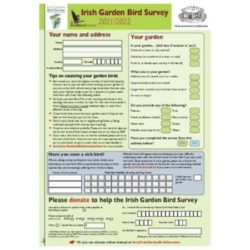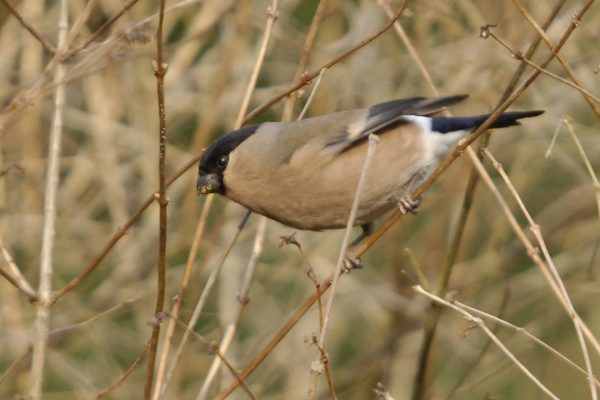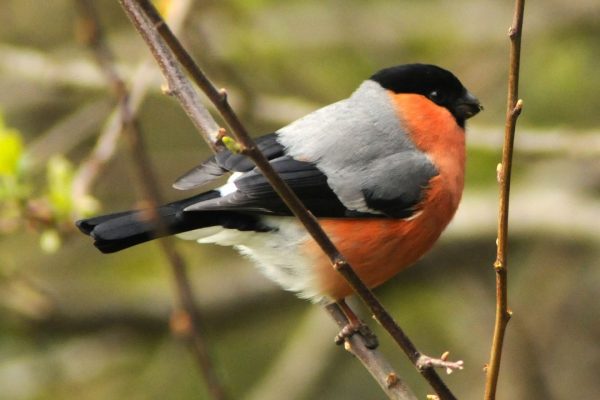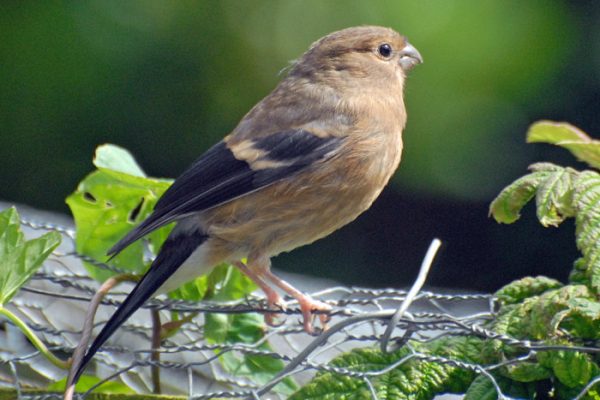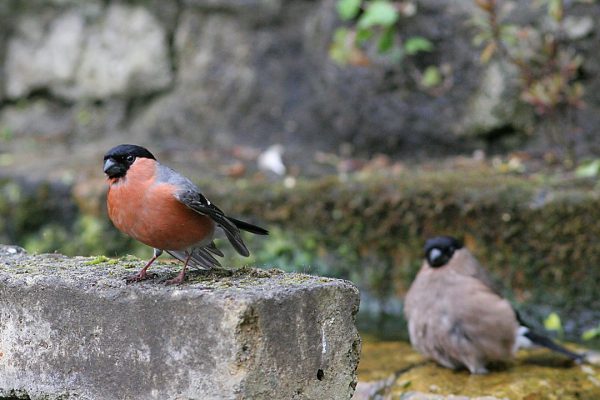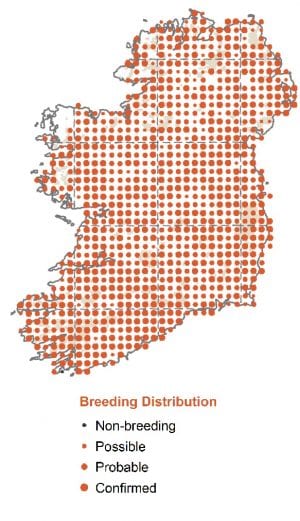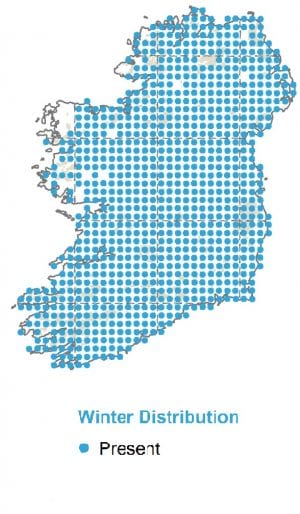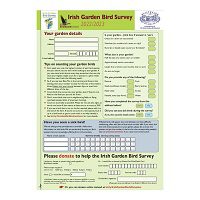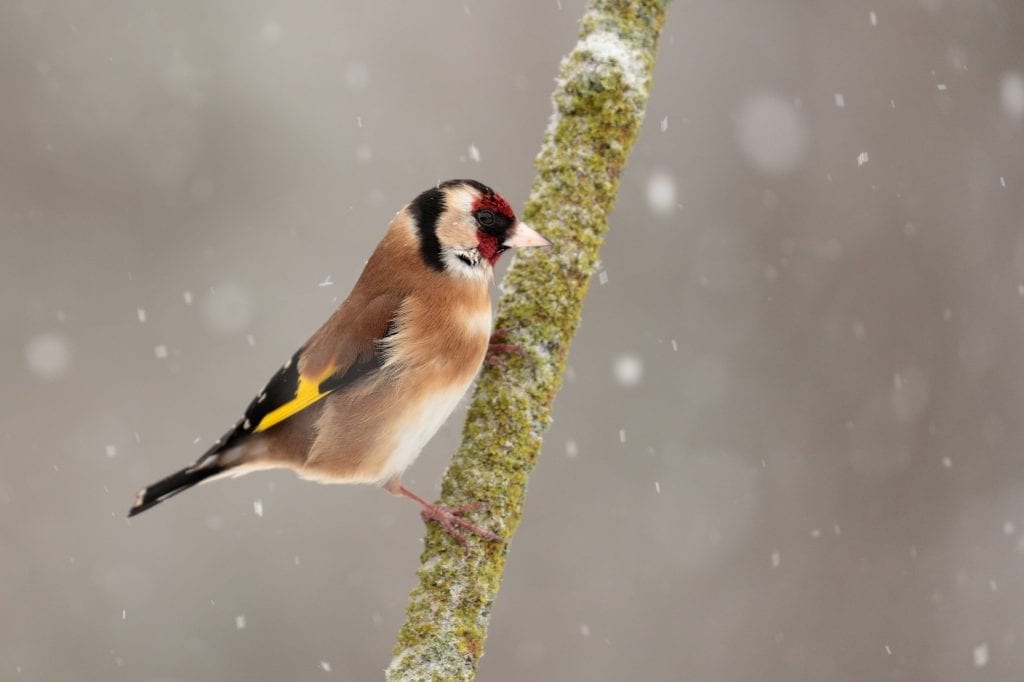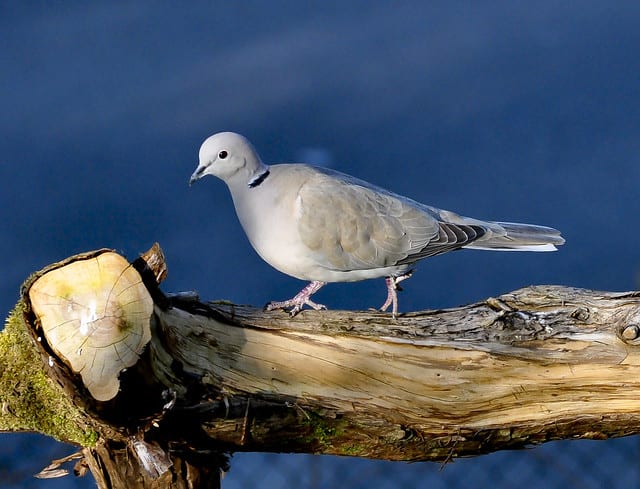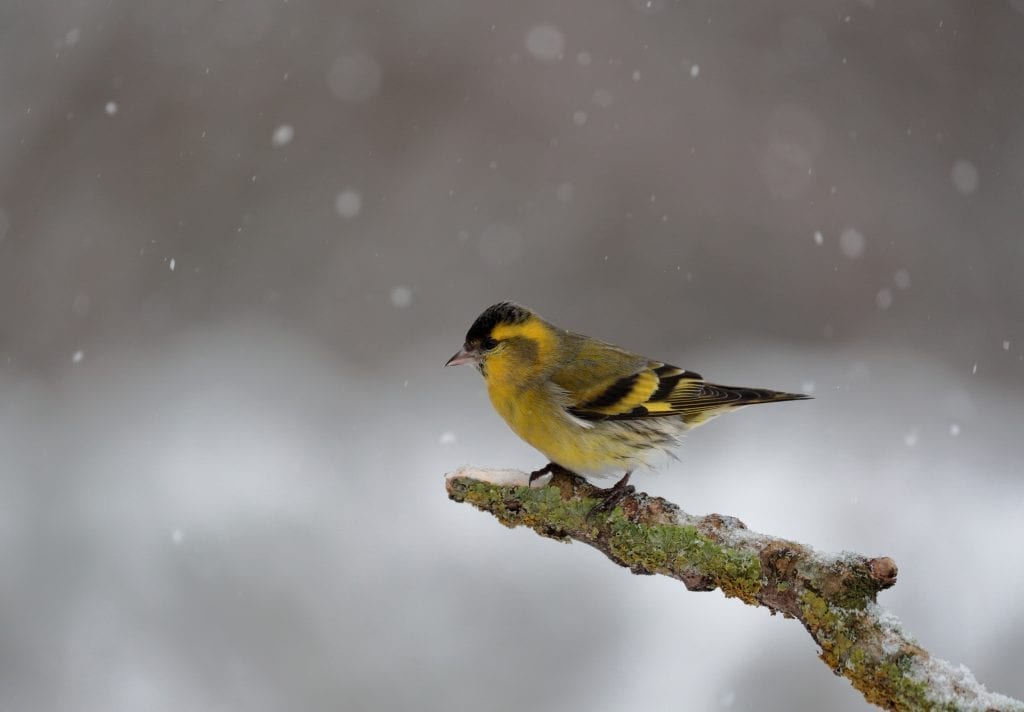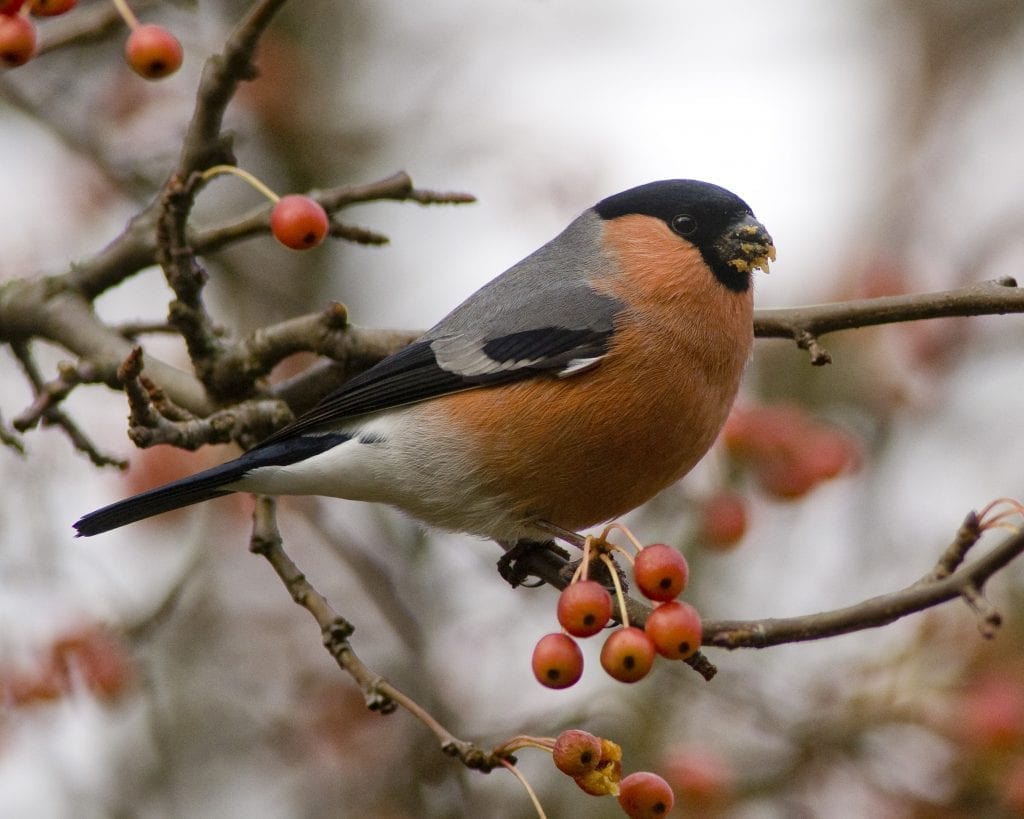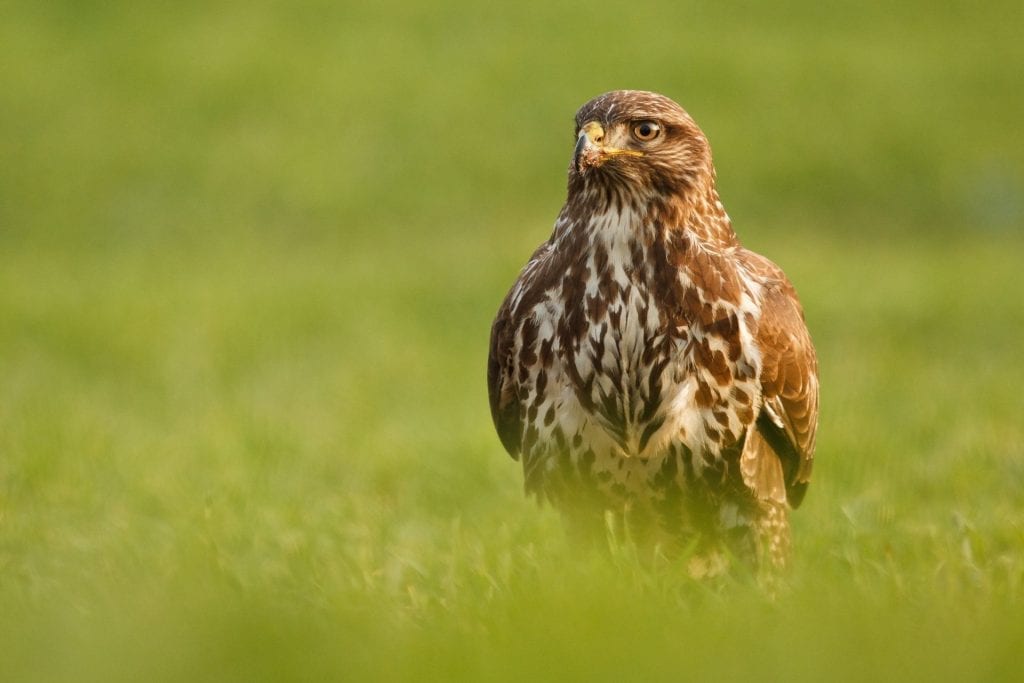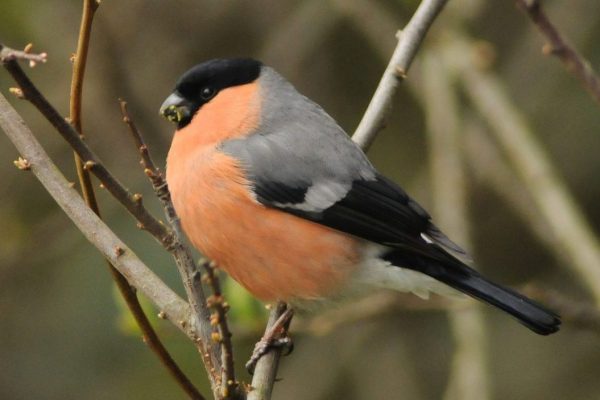
Bullfinch
| Irish Name: | Corcrán coille |
| Scientific name: | Pyrrhula pyrrhula |
| Bird Family: | Finches |
green
Conservation status
Conservation status
Status
Uncommon but widespread resident.
Identification
Named for its characteristic heavy build and thick “bullish” neck, the Bullfinch is a stocky bird. At around 15cm in length they are roughly the same size as a House Sparrow, though often appear much plumper. Their distinctive thick, stubby black bills are the perfect tools both for shearing off tasty flower buds and for crushing tough seeds. Males have a glossy black cap, face, wings and tail, a pale bar on each wing, and striking white rump patch, pencil-grey back and beautiful reddish-rose breast and belly. Females look similar, save that the breast and belly are instead a greyish brown colour. Young birds are browner overall, and lack the black cap. Usually feeds quietly hidden away in a tree or shrub, usually in pairs or small groups.
Voice
A quiet melancholic sounding “peu”, sometimes doubled “peu-peu”. The song is a similar quiet warble.
Diet
Feeds mainly on the buds of native trees (Oak, Cherry, Hawthorn), as well as seeds and berries.
Breeding
Breeds throughout Ireland, usually in hedgerows and deciduous woodland.
Wintering
Widespread, especially in gardens.
Monitored by
Blog posts about this bird
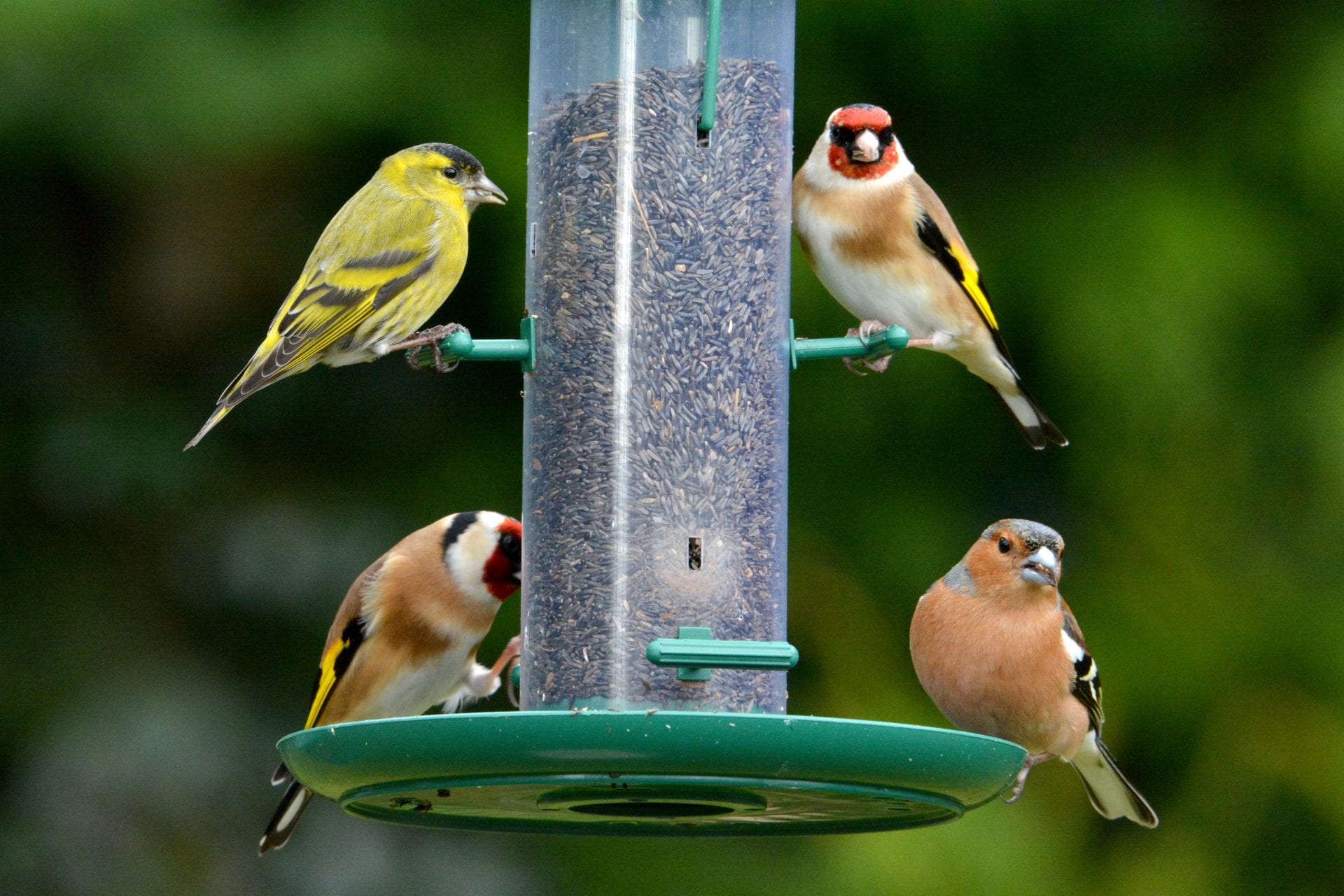
Where have all the Garden Birds gone?
Our annual Irish Garden Bird Survey returns at the end of this month! In recent weeks we’ve received lots of emails and phone calls from people around the country, reporting feeders completely untouched and barely a bird to be seen in their gardens. So, where have all the garden birds gone?
The first thing to say is that this is entirely normal and expected, and we see something similar happen at this time every year. If I asked you to cast your mind back to last winter, when the weather was cold, the days were short and the leaves were off the trees you could probably tell me about a long list of birds visiting your garden, but you’d likely be thinking of a bit later in the year rather than the end of October and start of November. That’s one of the reasons surveys like the Irish Garden Bird Survey are so important. By having a written record, we can ensure we’re comparing like with like over the years.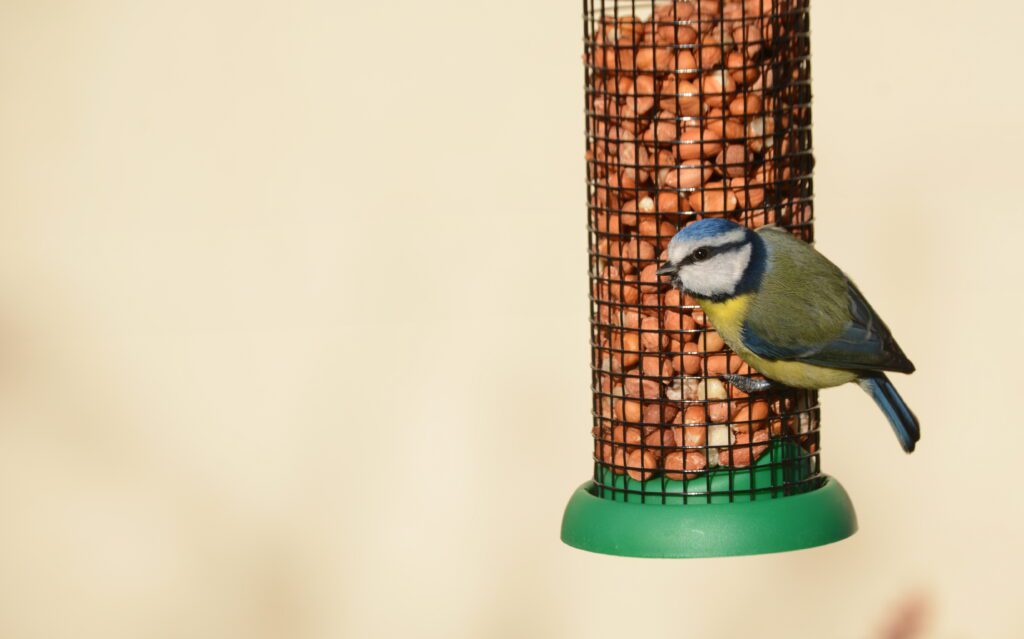
Reliable Return
From late summer onwards, most birds are finished nesting and therefore aren’t restricted to finding food in the immediate vicinity of their nests. They can travel wherever they want, and wherever the food is. This coincides with a time when there’s an abundance of berries, nuts, seeds and insects, from August to October. It's also a good way for the birds, especially the juveniles, to explore the wider landscape and get an idea where there's suitable habitat that they may need for nesting or feeding in the future. This year appears to have been a ‘mast year’ for many trees and shrubs, meaning they’ve produced a bumper crop for the birds to enjoy. So, the birds don’t really need peanuts and seed feeders as they have plenty of fresh natural food. This mast year is likely the reason we've had so many people contacting us this year regarding 'missing' garden birds, compared to previous years. As the weeks go on these natural food supplies will get depleted however, and the days will get shorter and colder, and over the course of November we’d expect to see the usual suite of bird species gradually returning to gardens. The first ones back will likely be the Tits, Robins and Dunnocks, with Blackbirds, Thrushes and Finches becoming more regular into December. The Irish Garden Bird Survey starts at the beginning of December each year (Monday 28th November this year), as this coincides with many birds having returned to gardens, though we continue to see a build in numbers until the new year.You can download the form for this year’s Irish Garden Bird Survey here.
More info about the Irish Garden Bird Survey and looking after your garden birds can be found here.
Feeding Advice
So, at the moment we suggest that you can either hold off putting out food for another few weeks, or you can put out a small amount of food in one or two feeders – enough so that the birds find it when they need it, but not so much that it’s getting wet and mouldy and needs to be thrown out! At present there’s no substantial concern about garden birds contracting avian influenza, though anyone with poultry or captive birds should follow department of agriculture guidelines and keep them away from wild birds.
Science Week on RTÉ
In less than two weeks time it will be Science Week (13th-20th November) and we’re delighted to be taking part in the Future Island programme on RTÉ television. We’ll be discussing the Irish Garden Bird Survey, which is Ireland’s longest running citizen science wildlife survey, and the various trends and patterns in numbers we’ve seen over the years. You can email the programme at birds@indiepics.ie with questions, photos or simply to let them/us know what birds are starting to return to your garden. The programme will be broadcast live on three nights over the course of Science Week, and we hope it’ll inspire households around the country to take part in this year’s survey.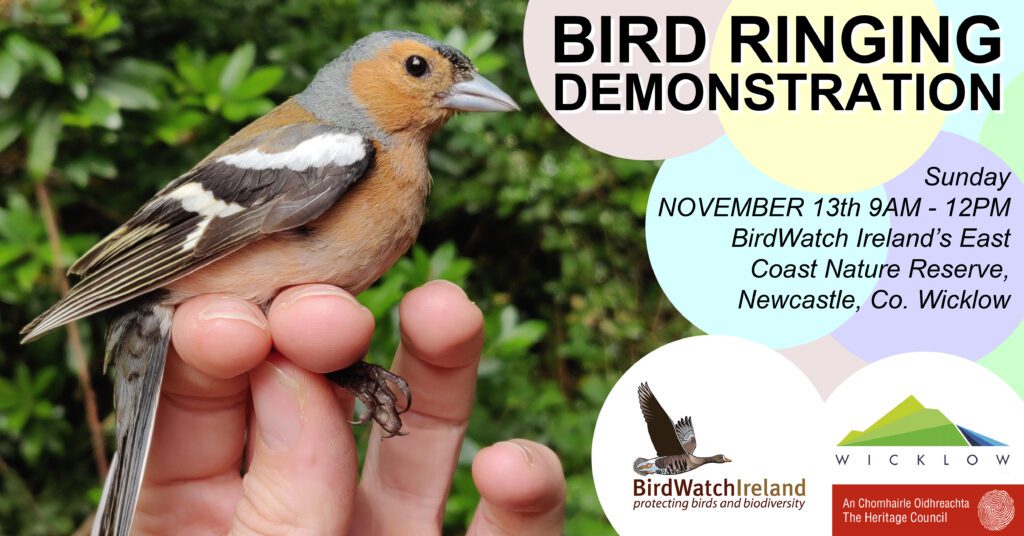 Up Close and Personal
We will be hosting a Ringing Demonstration at our East Coast Nature Reserve in Wicklow on Sunday 13th November, between 9am and 12. Come see some of your favourite garden birds in the hand. See how licensed bird ringers catch and ring birds using mist nets in order to study their life history and ecology. Bird ringing demonstration days are a great opportunity to see some of the best-loved birds up close and to find out more about this important conservation work. There will be an opportunity to ask questions, go through the key identification features and explain how to recognise the species in the field. Feel free to come and go anytime during the session as birds will need to released once ringed. Outdoor clothes advisable. Kindly funded by the Heritage Office of Wicklow County Council.
Up Close and Personal
We will be hosting a Ringing Demonstration at our East Coast Nature Reserve in Wicklow on Sunday 13th November, between 9am and 12. Come see some of your favourite garden birds in the hand. See how licensed bird ringers catch and ring birds using mist nets in order to study their life history and ecology. Bird ringing demonstration days are a great opportunity to see some of the best-loved birds up close and to find out more about this important conservation work. There will be an opportunity to ask questions, go through the key identification features and explain how to recognise the species in the field. Feel free to come and go anytime during the session as birds will need to released once ringed. Outdoor clothes advisable. Kindly funded by the Heritage Office of Wicklow County Council.
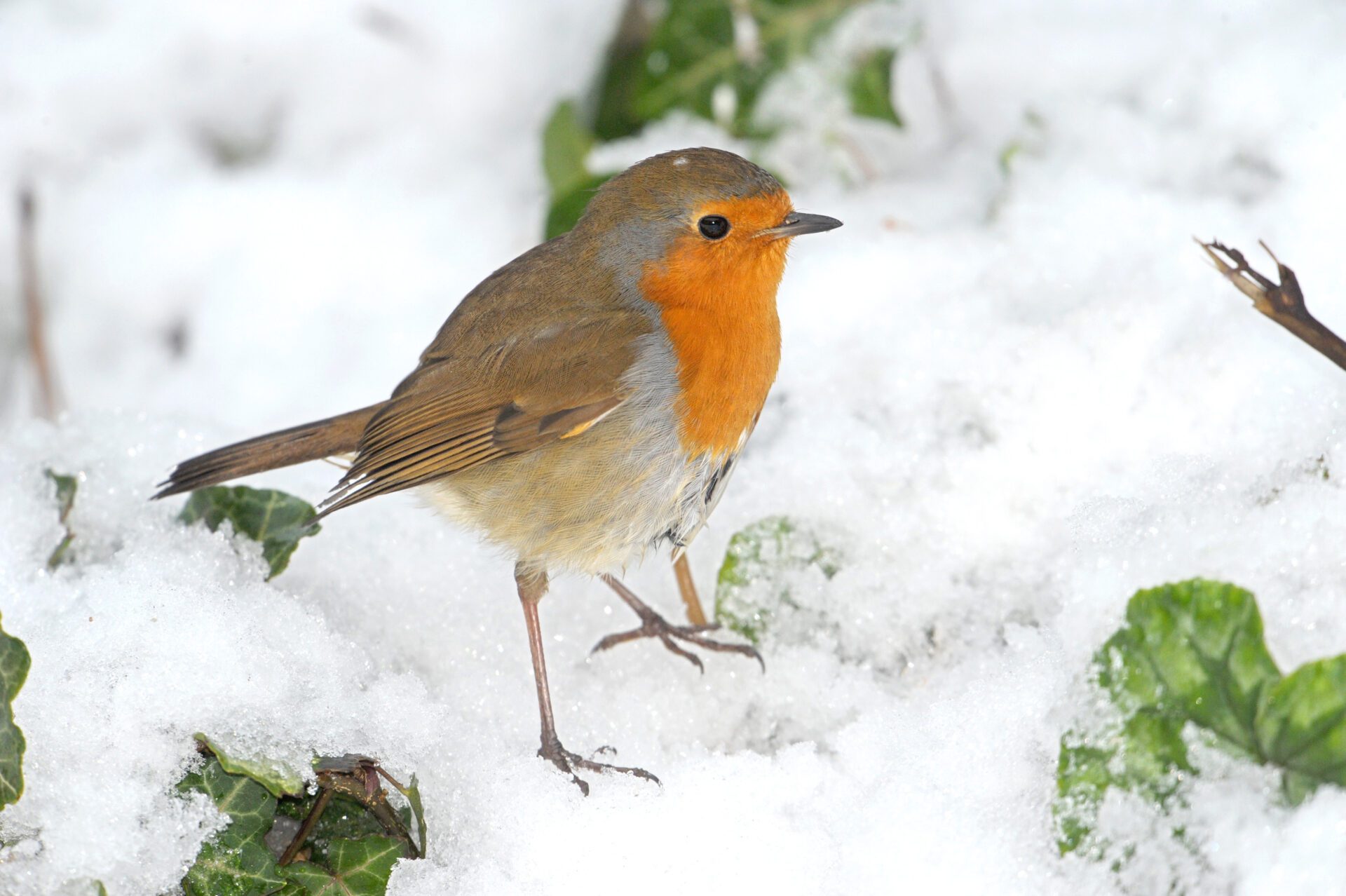
'Last Christmas' - Birds in Irish Gardens last winter
There's still time to take part in the Irish Garden Bird Survey!! See here for more details.
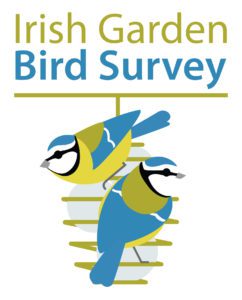 If you’re a BirdWatch Ireland member you’ll have already read the results of last year’s survey in your winter edition of Wings magazine. If you’re not a member, please join and support our work! But you can catch up on last year’s Irish Garden Bird Survey results with the overview below. If this is your first year to take part in the survey, don’t worry about knowing every single species that might appear in your garden – just familiarise yourself with the most common ones to start off. If you’re a survey veteran, then see how your garden bird list compares to the national average!
If you’re a BirdWatch Ireland member you’ll have already read the results of last year’s survey in your winter edition of Wings magazine. If you’re not a member, please join and support our work! But you can catch up on last year’s Irish Garden Bird Survey results with the overview below. If this is your first year to take part in the survey, don’t worry about knowing every single species that might appear in your garden – just familiarise yourself with the most common ones to start off. If you’re a survey veteran, then see how your garden bird list compares to the national average!
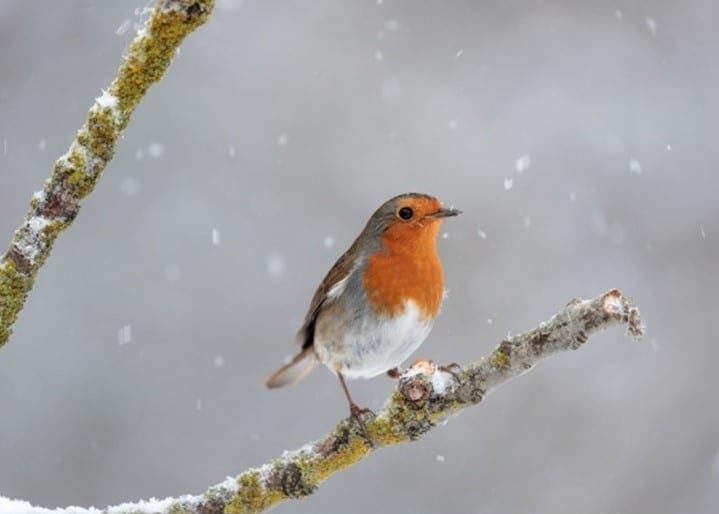
Over 90% of Irish Gardens
The species at the top of the list didn’t change much from previous years. Robin, as per usual, was on top, followed by Blackbird and Blue Tit. Great Tit and Magpie moved up a place each into 4th and 5th, thanks to a fall in the numbers of Chaffinch reported. Robins can still be territorial in the winter, so are pretty evenly spread across the country, while our Blackbird population is topped up by hundreds of thousands of migrants from Scandinavia in the winter, hence their high-ranking each year. Blue Tits and Great Tits are pretty ubiquitous too, and Magpies are very effective at exploiting both urban and rural habitats.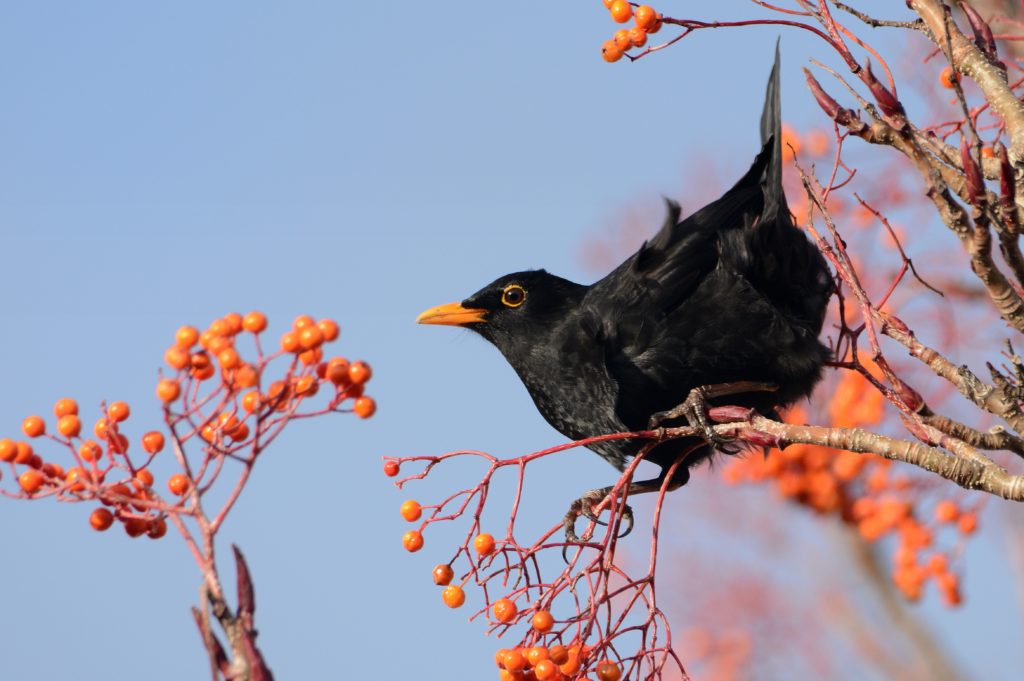
80-90% of Irish Gardens
Chaffinch and Goldfinch fell two and three places to 6th and 10th respectively, since the previous winter, and those declines were greatest in urban and suburban gardens rather than rural ones. On the back of a great breeding season, Coal Tit moved up three places to 7th place. House Sparrows kept 8th position, and Starling made it into the top 10 garden birds for the first time in a decade!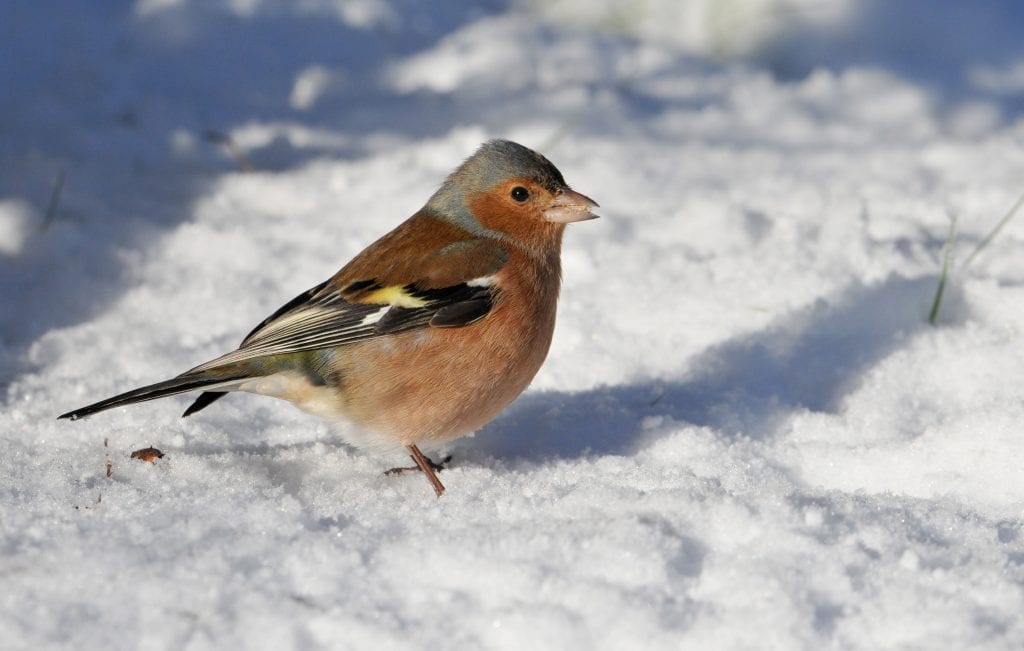
50-80% of Irish Gardens
Wren dropped two places to 11th, while species such as Dunnock (12th), Rook (16th), Collared Dove (17th) all stayed in the same position as the previous winter. When a winter is pretty mild (the occasional storm excluded) we tend to see this stability in the rankings across many species. There was some slight movement for Woodpigeon (14th), Jackdaw (15th) and Hooded Crow (19th), all of which fell one place. The mild weather tends to mean these species aren’t forced to retreat to gardens for food as much as in other winters. Song Thrush increased by around 2% and jumped to places in the rankings to 13th. Pied Wagtail rose up two places to 18th and occurred in >7% more gardens than they did on average over the preceding five year period. Despite being very common in towns, cities and shopping centre carparks, they’re actually seen in twice as many rural gardens as urban or suburban ones. Greenfinch continue to suffer the devastating effects of trichomoniasis (make sure to clean your feeders regularly!) and reached a new low for the species in the survey – 20th place.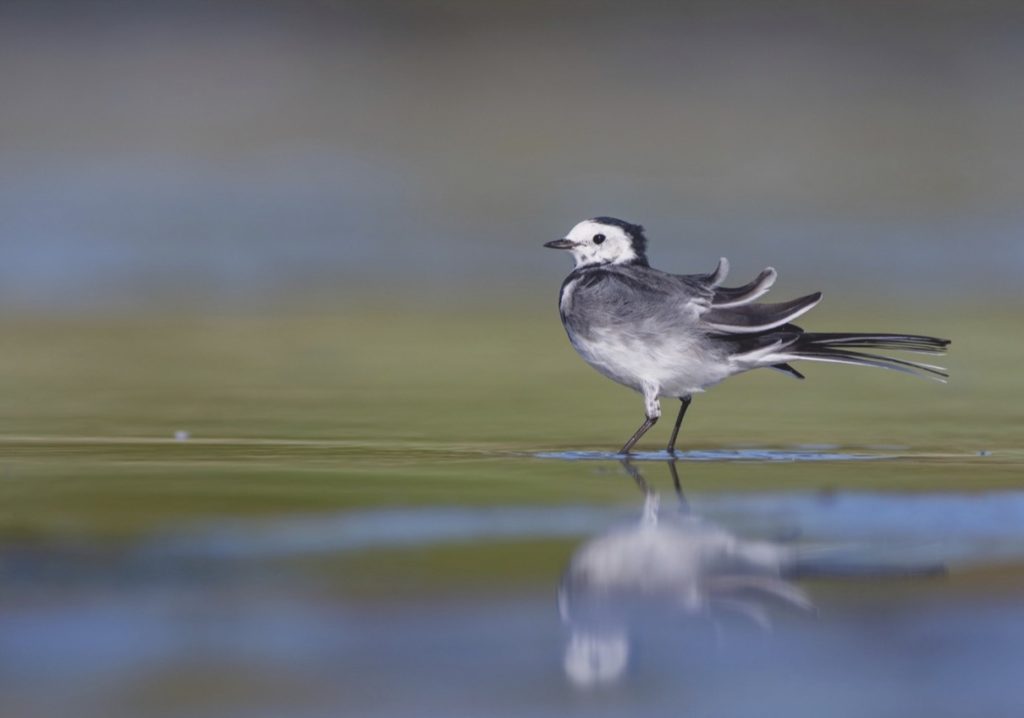
20-50% of Irish Gardens
While the above species occur in more than 50% of gardens, you’re in the minority if one of the below appears in your garden this winter: Siskin jumped up 7 places (8%) since the previous year. They usually start to appear in gardens from mid-January onwards, but they were making appearances from late November right through to March in most parts of the country last winter. No other species made such a big jump pup the table! One of the bigger losers was Goldcrest - down 5 places to 29th, a decrease of nearly 8%. It was a mild winter, and a good breeding season for most species in 2020, so the reason for this isn’t immediately obvious. Bullfinch dropped three places to 24th, but this might just be due to the mild winter and abundance of feeding options in the wider countryside, as they’re not a bird that visits feeders and so aren’t as associated with gardens as other finches. Other species in the 20-50% band include Blackcap, Long-tailed Tit, Sparrowhawk, Mistle Thrush and Feral Pigeon. Again, not species that tend to avail of bird feeders with any regularity, but species who know how to make a good living in a human-dominated landscape, be it rural, urban or suburban.Best of the rest
Despite being a non-native species, Pheasants tend to be seen in 15-20% of gardens each year, which is surprisingly high considering they don’t tend to breed well in the wild, so are reliant on being released by gun clubs every autumn. Buzzards moved two places up the rankings and are seen over 15% of gardens each winter. Herring Gulls were in 11% of gardens, Black-headed Gulls in 4%, and 1.3% of gardens had some sort of gull visiting but weren’t sure what species! Great Spotted Woodpeckers are one of the most recent additions to our bird community, and over 4% of gardens had one visiting their peanut feeders (it’s always peanut feeders!) last winter. They’re now breeding in almost every county in Ireland, so expect to see them charging up the rankings table in the coming years. Last year was a mast year for acorns, which meant Oak trees were providing a huge bounty for species such as Jays, and as a result they were seen in fewer gardens than usual (8%, down 1% from the average). This tends to happen every few years. Lastly, Redwing and Fieldfare, our two wintering thrush species, both dropped a bit, thanks again to the mild winter.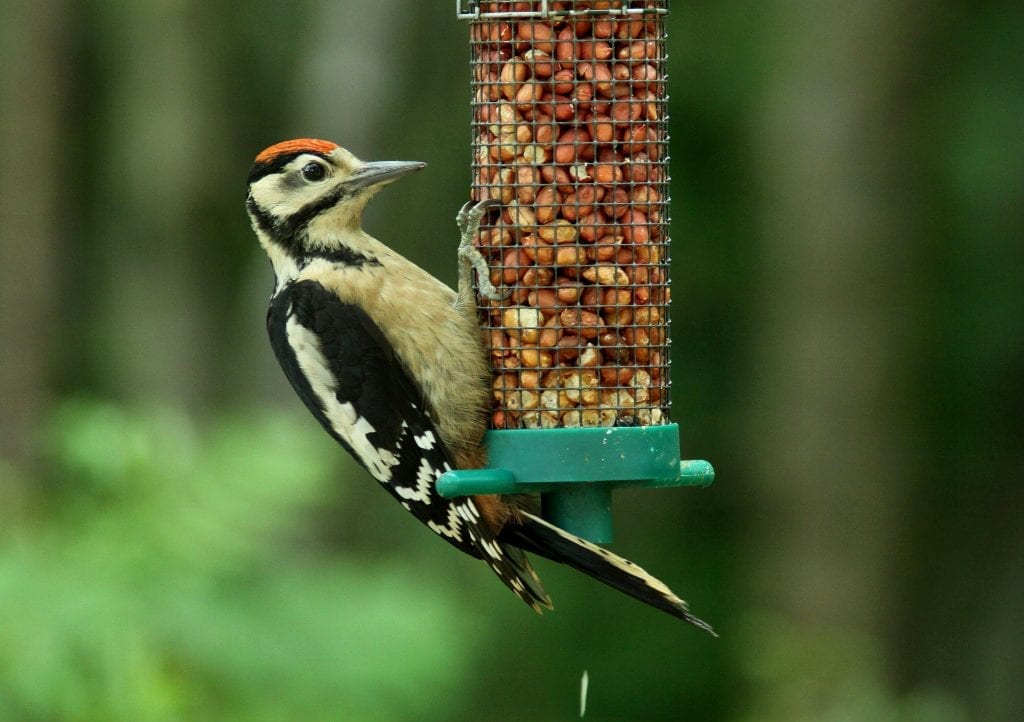
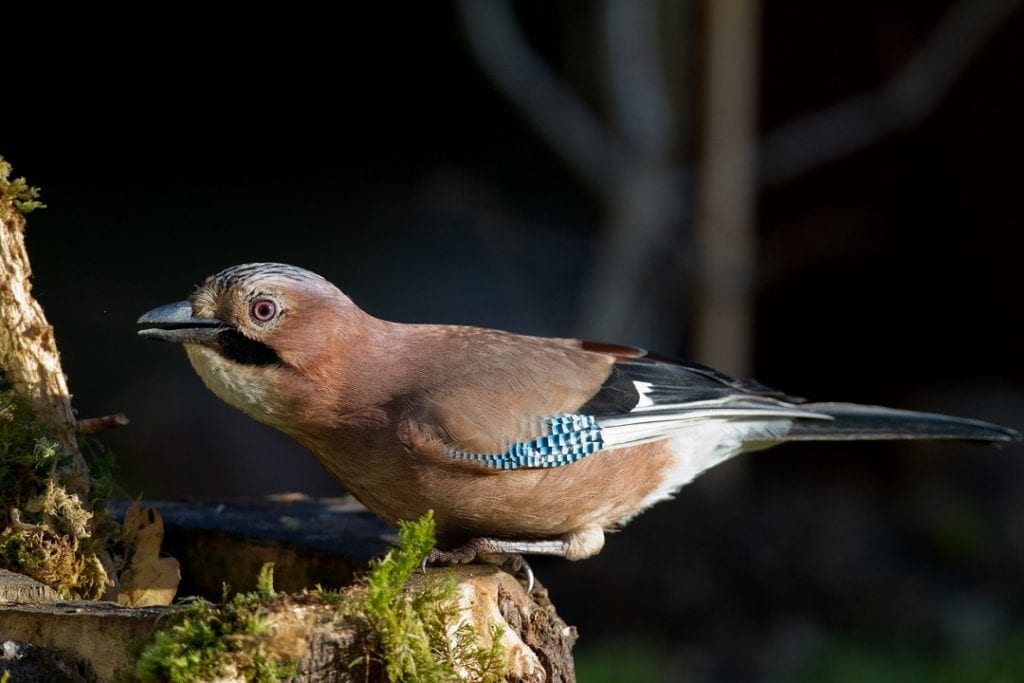 See below for the full Top 30 birds in Irish gardens last winter, and their various ups and downs since the previous year. Most gardens record between 10 and 25 species over the course of a winter. Whether you have more or less than that, we still need you do to the survey!
See below for the full Top 30 birds in Irish gardens last winter, and their various ups and downs since the previous year. Most gardens record between 10 and 25 species over the course of a winter. Whether you have more or less than that, we still need you do to the survey!
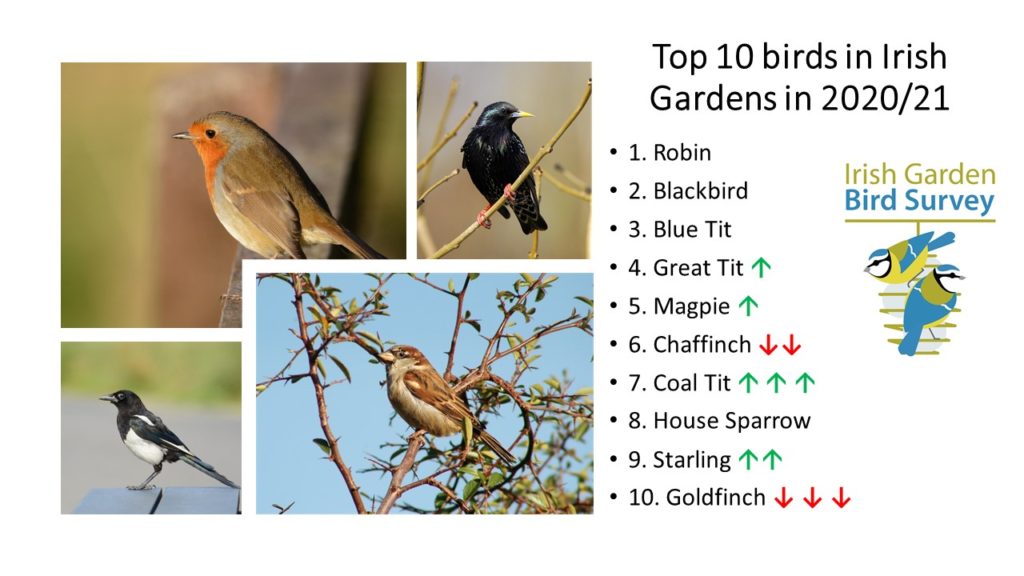
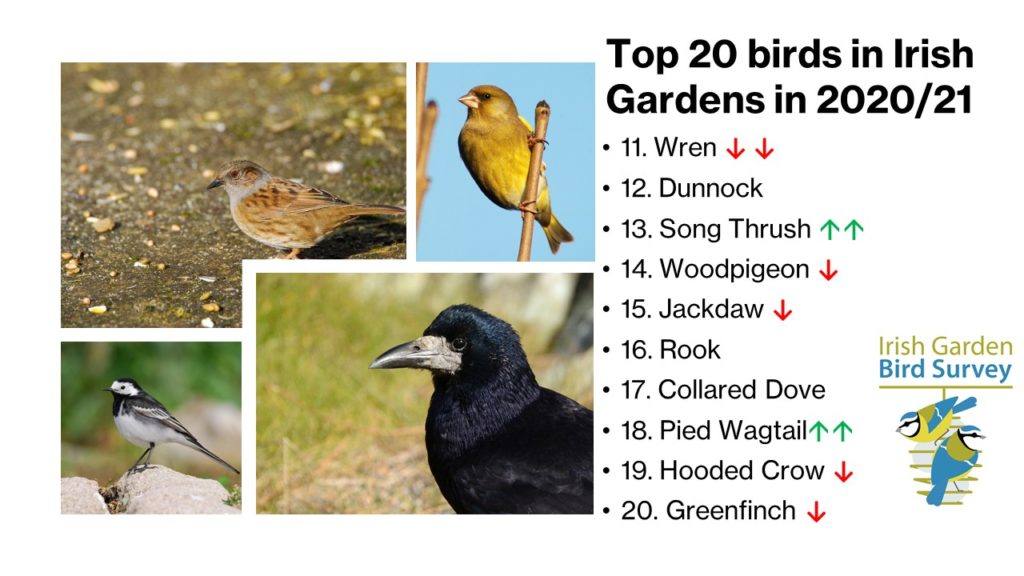
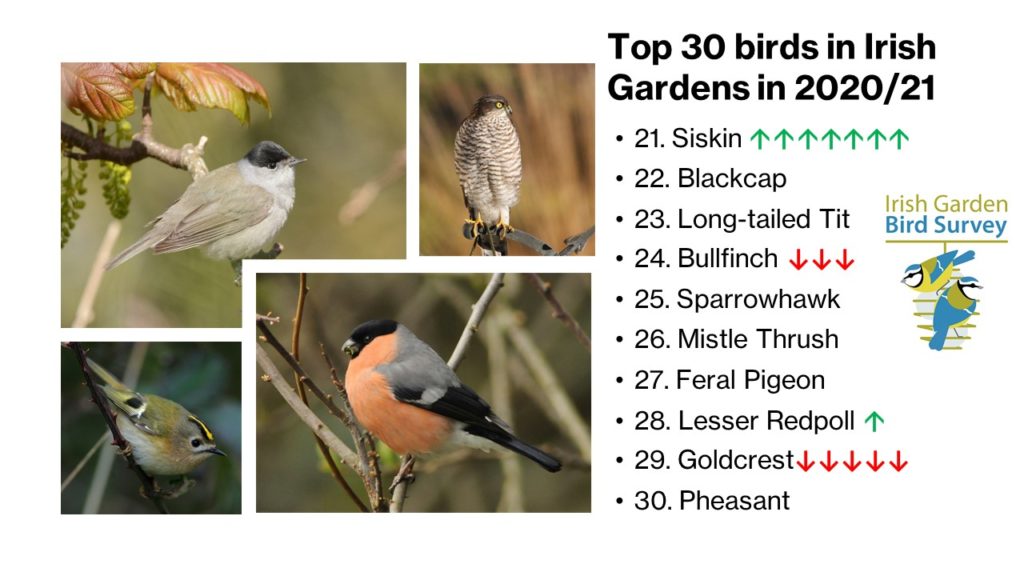
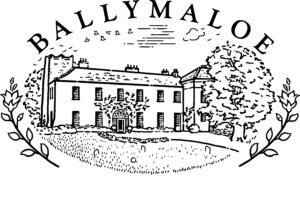
We are hugely grateful to Ballymaloe for their sponsorship and support of the Irish Garden Bird Survey.
For more details about the Irish Garden Bird Survey click here, or download the survey form below.
